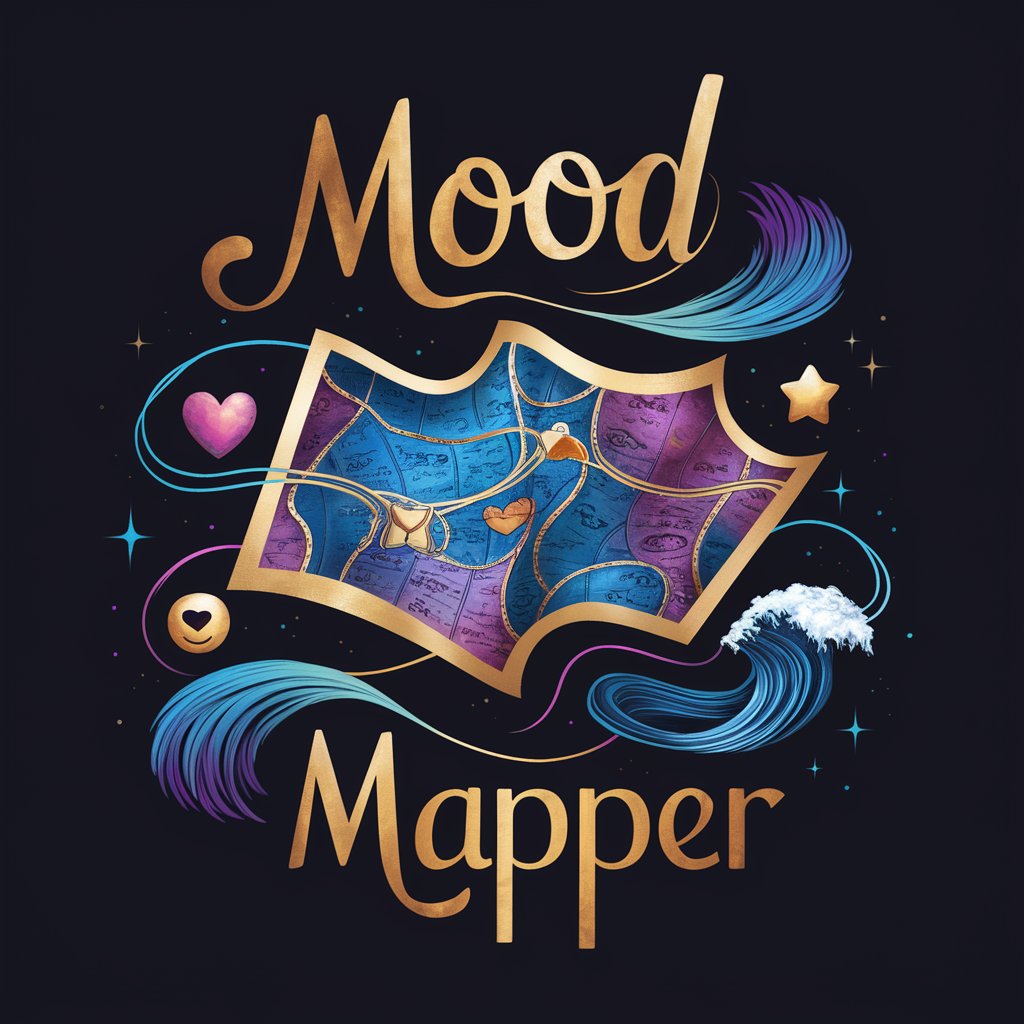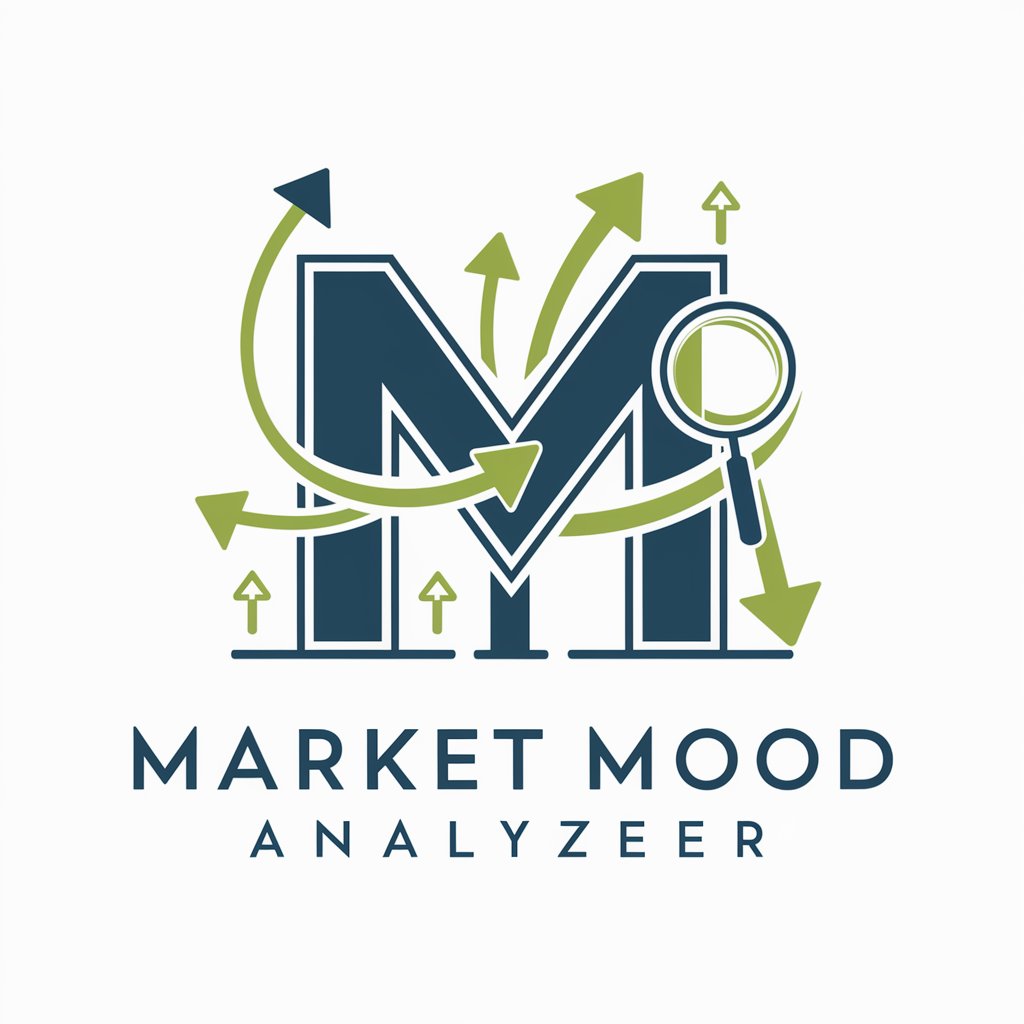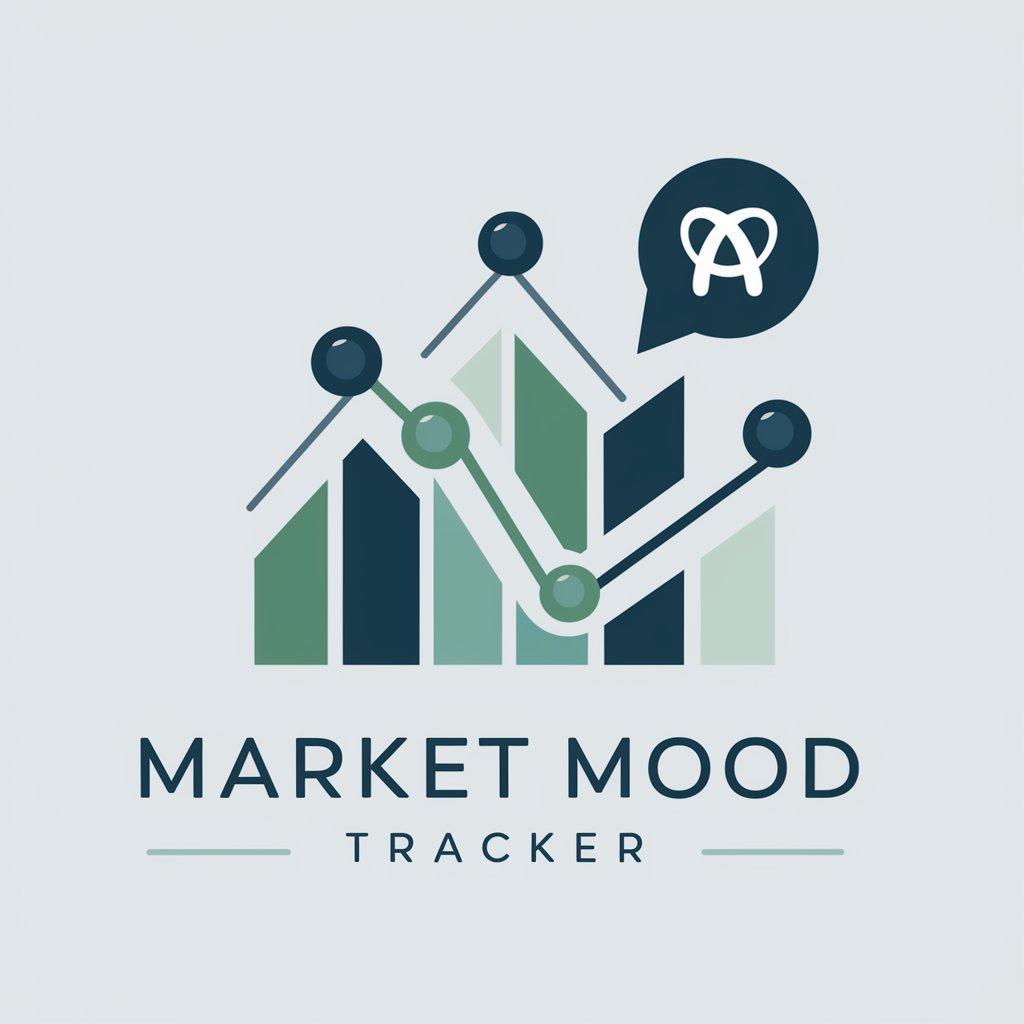
Market Mood - AI-Powered Market Analysis

Welcome to Market Mood, your AI for market sentiment insights.
Deciphering market moods with AI
Analyze the latest news about
Evaluate the market sentiment for
Provide a sentiment rating for
Assess the impact of recent events on
Get Embed Code
Understanding Market Mood
Market Mood is a specialized tool designed to analyze market sentiment towards companies by evaluating corporate news and other relevant data. It employs a combination of news source analysis, content tone evaluation, market trends, and recent stock price movements to generate a sentiment rating on a scale from 1 to 10, where 1 signifies a bearish outlook and 10 a bullish outlook. This tool is particularly adept at sifting through vast amounts of data to provide a nuanced understanding of market sentiment, which can be critical for making informed investment decisions. For example, if a company announces a groundbreaking new product, Market Mood would assess the news' impact, market reaction, and likely stock movement, offering a comprehensive sentiment rating that reflects the market's optimism or skepticism. Powered by ChatGPT-4o。

Core Functions of Market Mood
Sentiment Analysis
Example
Evaluating the market's reaction to a tech company's earnings report. If the report exceeds market expectations and is covered positively across major financial news outlets, Market Mood's sentiment rating might lean towards a bullish outlook.
Scenario
An investor considering whether to increase their stake in the tech company could use this analysis to make a data-driven decision.
Market Trend Evaluation
Example
Analyzing the effect of macroeconomic changes or industry trends on a company's stock price. For instance, if there's a surge in electric vehicle demand, Market Mood could provide insights into how this trend might benefit specific auto manufacturers.
Scenario
A portfolio manager looking to capitalize on emerging trends might rely on this function to adjust their investment strategy accordingly.
Stock Price Movement Probability
Example
Assessing the likelihood of future price movements based on current market sentiment and historical data. For example, if a pharmaceutical company announces a successful trial of a new drug, Market Mood might project a high probability of stock price increase.
Scenario
An algorithmic trading firm could use these projections to inform their trading algorithms and optimize their trading strategy for maximum profitability.
Who Benefits from Market Mood?
Individual Investors
These users benefit from Market Mood by obtaining a nuanced understanding of market sentiment towards their holdings or potential investments, enabling them to make more informed decisions and potentially improve their investment returns.
Financial Analysts
Analysts can leverage Market Mood's detailed sentiment analysis and market trend evaluation to supplement their research, providing their clients or their own firm with deeper insights into market dynamics and investment opportunities.
Portfolio Managers
Portfolio managers can use Market Mood to gauge the market sentiment and trend directions for various sectors and companies, helping them to adjust their investment strategies in a timely manner to capitalize on market movements.
Algorithmic Trading Firms
These firms can utilize Market Mood's probability assessments of future stock price movements to inform and refine their trading algorithms, aiming for higher accuracy in trades and optimizing their strategies based on market sentiment analysis.

How to Use Market Mood
1
Start by visiting yeschat.ai for an instant, free trial without the need to sign up or subscribe to ChatGPT Plus.
2
Input the name of the company or the specific market you're interested in. Market Mood can analyze sentiments for various entities.
3
Specify the type of analysis you're looking for, such as recent news sentiment, market trends, or hypothetical market scenarios.
4
Review the sentiment rating provided by Market Mood, ranging from 1 (bearish outlook) to 10 (bullish outlook), based on recent data and news.
5
Utilize the insights for your decision-making process, whether for investment, research, or academic purposes. Remember, Market Mood provides data-driven analysis, not financial advice.
Try other advanced and practical GPTs
Mood Painter
Visualize emotions through abstract art

Mood Elevator
Elevate Your Mood, Enhance Your Life

Mood Foodie
Discover your mood's perfect meal

Mood Companion
Track, Analyze, Improve - Empowered by AI

Mood Tracker
Track Moods with AI Insight

Araby.Ai Course Learning Assistant
Empowering learning with AI-driven insights

Mood Mapper
Transform emotions into fantasy worlds.

Eat This!
AI-Powered Custom Meal Planning

Clic&Eat
Dine Smart, Not Hard

Eat Healthy
Empowering your diet with AI

Easy Eat
Your AI French Chef at Home

Eat Jyväskylä
AI-Powered Local Dining Guide

Frequently Asked Questions about Market Mood
What is the sentiment rating scale used by Market Mood?
Market Mood uses a 1 to 10 rating scale to represent market sentiment, where 1 indicates a bearish outlook and 10 signifies a bullish outlook. This rating is based on the analysis of recent news and market data.
Can Market Mood analyze sentiments for any company?
Yes, Market Mood is designed to analyze sentiments for a wide range of companies. Users need to input the company name or relevant market information for analysis.
How does Market Mood handle hypothetical market scenarios?
Market Mood evaluates hypothetical market scenarios by analyzing current market trends, news sentiment, and historical data, providing probability assessments for future price movements.
Is Market Mood suitable for academic research?
Absolutely. Market Mood can be a valuable tool for academic research, offering data-driven insights into market sentiments and trends that can enrich financial or economic studies.
How often is the data and sentiment analysis updated in Market Mood?
Market Mood's analysis is based on the latest available data, often updating in real-time or near real-time to reflect the most current market sentiments and trends.





